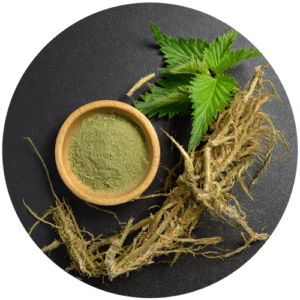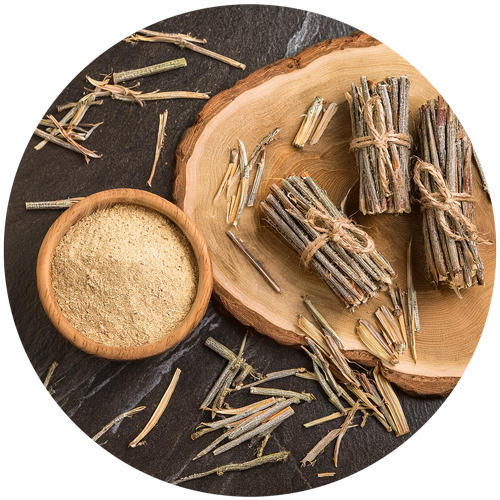

NETTLE
 Upper airways
Upper airways  Cardiovascular system
Cardiovascular system  Renal function
Renal function  Joints
Joints  Beauty
Beauty Nettle Urtica dioica L. is a herbaceous plant commonly found in Asia, Africa and Europe. The leaves are used in particular for gastrointestinal disorders and joint pain. The roots are used for their known renal elimination properties.
Regulations
and analysis
Identification : TLC
Data on traditional use
Cahier de l’agence du médicament :
- Used for seborrheic skin conditions (leaf or aerial parts)
- Used for joint pain (leaf or aerial parts)
- Kidney water elimination and urinary tract health (root)
EMA monograph :
- Relief of minor joint pain (aerial parts of Urtica Urens L. & Urtica dioica L.)
- Kidney elimination and urinary tract health (aerial parts of Urtica Urens L. & Urtica dioica L.)
- Used for prostate health (root Urtica urens L. & Urtica dioica)
- Used in seborrheic skin conditions (powdered aerial parts Urtica urens L. & Urtica dioica L., herba)
German monograph (sheet) :
- Used for urinary tract and kidney health (leaves)
- Used for prostate health (root)
Canadian monograph :
- Prostate health (root)
- Used to help relieve joint pain (tops)
- Airways (tops)
WHO monograph (root) :
- Used for renal elimination
- Used for joints
- Used for airways
Association ideas by health axis
Select one or more axes:

Detailed description
Nettle Urtica dioica L. is a herbaceous plant in the Urticaceae family, commonly found in Asia, Africa and Europe.
Nettle has long been used as a food ingredient (in soups, salads and juices), as its leaves are highly nutritious. With its high iron, calcium, magnesium, potassium and phosphorus content, nettle is said to have a remineralizing effect.
Leaves are rich in numerous bioactive compounds such as flavonoids, phenolic acids, amino acids, carotenoids and fatty acids.
The roots can be used to improve renal water elimination, soothe the respiratory tract and as a skin application to relieve skin irritations. Leaves are used in particular for gastrointestinal disorders and joint pain.














